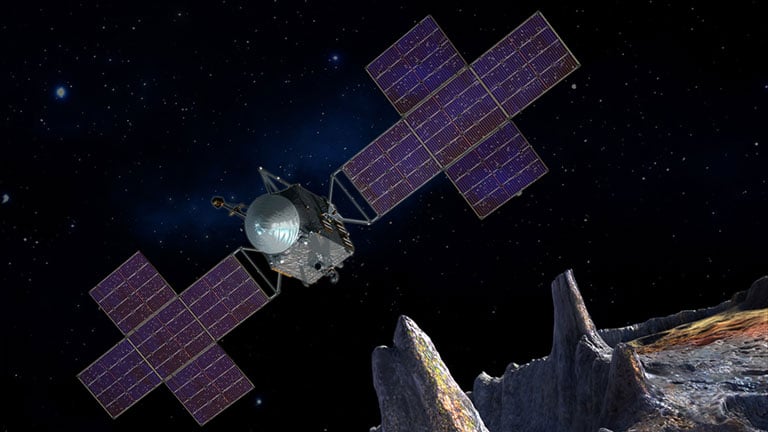
Two space observatories situated on neighboring mountaintops of the Peloponnese peninsula in southern Greece will be the protagonists of a breakthrough space communication experiment to be conducted in 2025 by NASA. This will be in collaboration with the European Space Agency (ESA).
The project, centered around a mission to a distant asteroid named after the Greek goddess Psyche, will attempt a demonstration of deep space optical communication at a distance of three hundred million kilometers.
The aim is to test the use of lasers to transmit and receive more data with distant spacecraft than is possible with the radio waves currently in use.
If successful, the demonstration could unlock a world of new possibilities for future deep space missions, ESA said in an announcement on Monday.
Greek space observatories selected for communication experiment
The Helmos Observatory and the nearby Kryoneri Observatory were chosen as the most suitable locations for ESA’s ground infrastructure and laser transmitter, respectively.
Both observatories are owned and operated by the Institute of Astronomy and Astrophysics, Space Applications, and Remote Sensing (IAASARS) of the National Observatory of Athens.
In preparation for the 2025 demonstration, work is underway to prepare a single-photon-sensitive detector/receiver at the Helmos observatory—home to the powerful 2.3 meter Aristarchos optical telescope—and a high-power laser transmitter at the Kryoneri observatory, ESA notes.
During the experiment, a laser will be transmitted from the Kryoneri observatory in an attempt to reach the Psyche mission spacecraft, which, at the time, should be far enough from Earth to be representative of future deep space science and exploration missions.
If the laser reaches the spacecraft, the latter should respond by sending a message back to the Aristarchos telescope at the Helmos observatory.
The success of the experiment would mark the first time in history that optical communication with deep space has been achieved at such vast distance, Spyros Vasilakos, the vice president of the National Observatory of Athens told public broadcaster ERT.
Metal-rich asteroid named after Greek goddess Psyche
NASA’s Psyche mission launched on October 13, 2023 on a journey to explore what could be the exposed metallic core of an ancient planet of the same name.
The asteroid named Psyche was first discovered by Italian astronomer Annibale de Gasparis in 1852, as the sixteenth discovered asteroid. Located between the orbits of the planets Mars and Jupiter, Psyche is likely made of a mixture of rock and metal, with metal composing thirty to sixty percent of its volume.
Experts had speculated that the value of the various metals that the asteroid is made of could be worth an eye-popping ten thousand quadrillion dollars—if they were on Earth.
According to NASA’s most recent data, the asteroid is possibly a mix of metal and silicate, the same material found in glass and sand. However, none of these speculations can be validated until the asteroid has been reached and studied by their spacecraft.
See all the latest news from Greece and the world at Greekreporter.com. Contact our newsroom to report an update or send your story, photos and videos. Follow GR on Google News and subscribe here to our daily email!



